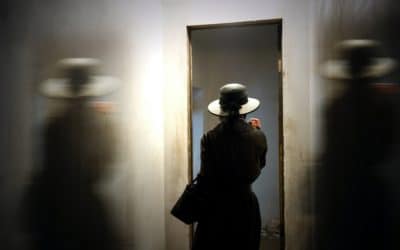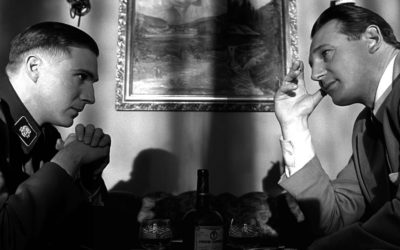
Feature
History with a Side of Murder
Mary Lawrence
Aldous Huxley once said, “The charm of history and its enigmatic lesson consists in the fact that, from age to age, nothing changes and yet everything is completely different.” The same can be said of a mystery novel.
We know what to expect when we read one; the same human foibles are employed, and yet the historical backdrop can cover the entire range of human existence. Combining history with mystery makes for an enormously popular genre. What better way to devour a history lesson than with a side order of murder?
Historical mysteries are sometimes considered the lowbrow alternative to historical fiction and nonfiction. After all, shaping history into the framework of a cracking good mystery can be challenging. Readers expect the author to create an authentic world consistent with the period in which the story is set. Glaring anachronisms can alienate readers faster than a knife fight in a barrel.
Adherence to “fact” can, however, be fraught with inaccuracy and introduce its own set of problems. History is subject to interpretation. Its perception will always be influenced by any era’s given sensibilities, and so the best we can expect is that the author makes a world ‘plausible.’ A reader should keep an open mind when reading a historical mystery, because the author is confined by certain constructs inherent in writing one.
Unlike history, which is continuously evolving, we expect a mystery novel to follow a certain set of rules. Usually there is an inciting murder or incident in which the status quo is disrupted. A quest ensues in which our sleuth encounters obstacles and must grapple with a feeling of hopelessness. Just when the situation seems impossible, a breakthrough occurs and fortune reverses. Finally, our protagonist triumphs, bringing resolution and restoration of calm. Justice may or may not have been served.
advertisement
Within the framework of a mystery novel, the author must also take the reader on an intellectual journey. The author drops clues and red herrings to lead the sleuth and reader to infer one assumption while knowingly meaning another. The reader wears the shoes of the sleuth. He or she must pay close attention to detail. Reviewing information and projecting forward is the impetus that keeps us reading.
But figuring out the killer may not be the goal of reading mysteries. Readers have just spent several hours getting to know the sleuth. I believe they enjoy comparing their deductive skills to those of the investigator’s. We all like to think we are wise to the motivations of others, whether they be sympathetic in nature, or base.
What are the hallmarks of a well-executed historical mystery?
A successful historical mystery will transport a reader to another time and place, to live out the circumstances alongside the protagonist. Immersing the reader in the sights and sounds of a given period connects them to the sleuth by engaging their senses and emotions. Empathy is a strong motivator in keeping us reading.
Another appeal of historical mysteries is their reliance on the power of observation to solve a crime. For example, DNA testing, ballistics, CCTV, and time stamps have no place in Tudor London. In my Bianca Goddard mysteries, my sleuth uses her knowledge of plants and alchemy to solve various murders. Historical mysteries rely on a game of wits, not technology.
A common trope of the genre is injecting historical figures into the story and seeing them in action. The number of queens, composers, authors, presidents, and scientists who happen to be amateur sleuths makes one wonder how these admirable characters found time to accomplish anything else.
Historical mysteries can run the gamut from being tame and cozy-ish to employing the particularities of an era to paint a more menacing crime and atmosphere. Even elements of fantasy can be woven into historical mysteries to interesting effect.
The beauty of a historical mystery is unique. While we focus our attention on circumstances and detail, we soak up a good deal of historical information at the same time. What better way to familiarize yourself with a historical figure, place, or event than absorbing a historical lesson as you ride the ups and downs of solving a crime? For that reason, I’ll take my history lesson with a side of murder.
About the Author
Mary Lawrence is the author of The Bianca Goddard Mysteries—a historical mystery series set during the final years of King Henry VIII’s reign. Her essays have appeared in several publications including Crime Reads, The Tudor Enthusiast, Criminal Elements, and the national news blog The Daily Beast. Two of her titles, The Alchemist’s Daughter and The Alchemist of Lost Souls, were named “Best Historical Mysteries of the Year” by Suspense Magazine. She divides her time running a berry farm and writing in Maine. Visit her at https://www.marylawrencebooks.com

More Historical Mystery Features
Historical Psychological Thrillers
How historical psychological thrillers stack up against psychological thrillers
Is it Historical Fiction?
How long ago does history start?
Offbeat World War Two Thrillers
Nine World War Two thrillers that don’t follow the usual storylines
Advertisement



